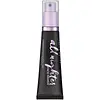What's inside
What's inside
 Key Ingredients
Key Ingredients

 Benefits
Benefits

 Concerns
Concerns

 Ingredients Side-by-side
Ingredients Side-by-side

Water
Skin ConditioningButylene Glycol
HumectantPolyacrylamide
Ethylhexyl Palmitate
EmollientGlycerin
HumectantC13-14 Isoparaffin
EmollientPhenoxyethanol
PreservativeCaprylyl Glycol
EmollientPullulan
Laureth-7
EmulsifyingTocopheryl Acetate
AntioxidantTetrahexyldecyl Ascorbate
AntioxidantSilica Dimethyl Silylate
EmollientNannochloropsis Oculata Extract
HumectantCarbomer
Emulsion StabilisingSodium Lactate
BufferingPotassium Sorbate
PreservativeTriethanolamine
BufferingSodium Benzoate
MaskingLitchi Chinensis Pericarp Extract
Skin ConditioningPolysorbate 20
EmulsifyingSodium Hyaluronate
HumectantHexylene Glycol
EmulsifyingPalmitoyl Tripeptide-1
Skin ConditioningPalmitoyl Tetrapeptide-7
Skin ConditioningWater, Butylene Glycol, Polyacrylamide, Ethylhexyl Palmitate, Glycerin, C13-14 Isoparaffin, Phenoxyethanol, Caprylyl Glycol, Pullulan, Laureth-7, Tocopheryl Acetate, Tetrahexyldecyl Ascorbate, Silica Dimethyl Silylate, Nannochloropsis Oculata Extract, Carbomer, Sodium Lactate, Potassium Sorbate, Triethanolamine, Sodium Benzoate, Litchi Chinensis Pericarp Extract, Polysorbate 20, Sodium Hyaluronate, Hexylene Glycol, Palmitoyl Tripeptide-1, Palmitoyl Tetrapeptide-7
Ingredients Explained
These ingredients are found in both products.
Ingredients higher up in an ingredient list are typically present in a larger amount.
Caprylyl Glycol is a humectant and emollient, meaning it attracts and preserves moisture.
It is a common ingredient in many products, especially those designed to hydrate skin. The primary benefits are retaining moisture, skin softening, and promoting a healthy skin barrier.
Though Caprylyl Glycol is an alcohol derived from fatty acids, it is not the kind that can dry out skin.
This ingredient is also used as a preservative to extend the life of products. It has slight antimicrobial properties.
Learn more about Caprylyl GlycolPhenoxyethanol is a preservative that has germicide, antimicrobial, and aromatic properties. Studies show that phenoxyethanol can prevent microbial growth. By itself, it has a scent that is similar to that of a rose.
It's often used in formulations along with Caprylyl Glycol to preserve the shelf life of products.